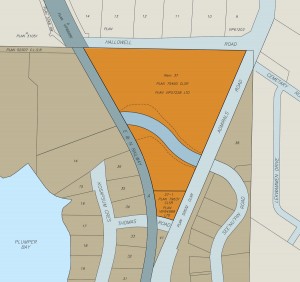This weblog is the most aligned with my topic, and I was particluarly excited to begin reading through information on it. I wanted to start by looking at sacred sites within First Nation’s territory, as I thought this would be applicable.
Site 1: First Nations Sacred Sites in Canada’s Courts: Book Review
In this review a distinction is made between two different kinds of protection one “strategy relies on obtaining current recognition and protection for what an indigenous people once unequivocally held and the latter strategy relies on the idea of protecting what an indigenous people once unequivocally were”. This is an interesting point to add to my reflection on the direction of my paper. Is the viewpoint of whether land is a “holding” needing to be protected, or is integral to the identity of a culture important, if the outcome is the same (land getting protected)? There is a distinction between two different types of strategies based on historical legal proceedings, the first being related to the “Meare’s Island Case,” and the second to the “Taku River and Haida Case”.
http://www.bsos.umd.edu/gvpt/lpbr/subpages/reviews/ross0106.htm
From here I was, naturally, interested in finding out more about the cases. I found a website that clarified the decisions in the Taku River and Haida cases.
Site 2: The Haida Nation and Taku River Tlingit Decisions: Clarifying Roles and Responsibilities for Aboriginal Consultation and Accommodation
This case sets a precedent for consultation of Aboriginal groups. Basically, legally recognized claims are not required to “trigger” the consultation process. Impact upon asserted rights of groups is enough of a reason to enforce consultation. This decision is important as it values the rights of First Nations outside of the span of “legally recognized rights”.
http://www.lawsonlundell.com/media/news/236_Negotiatorarticle.pdf
This site got me thinking about whether there are similar stories of successful environmental management decisions or activism, so I began researching this.
Site 3: Aboriginal Affairs and Northern Development Canada: Environment and Natural Resources: Success Stories
This website offers links to specific projects that have been completed both through government agency help and media attention. One thing that I keep thinking as I look through the site though, is that all of these experiences are mediated through the government agencies of the “colonizers”. This may be the quickest and most effective way to create change in a community, but is it the best way? Are FN rights and values respected in this process or must they conform to particular enforced criteria that may undermine their own values?
http://www.aadnc-aandc.gc.ca/eng/1307103658811/1307103823931
Site 4: IEN: Canadian Indigenous Tar Sands Campaign
I had looked at this site before, but in a different format and scope. Now I found something incredibly applicable to where my assignment is going. This particular portion of the Indigenous Environmental Network is focussed on the tar sands in Northern Canada and their impact on Indigenous and non-Indigenous groups and the environment. There is a variety of information in various media formats, presented by elders, youth and all other community members. Various bands are connected together on this issue and multiple viewpoints are represented through this website. Additonally, the focus on the tar sands as an issue is addressed, as 10 0r so years ago very few people knew of the environmental toll being taken in these areas. Media has brought light to these concerns.
http://www.ienearth.org/tarsands.html
Site 5: Native Web Resources: Environment
This site is a collaborative effort whose goal is to “provide a cyberspace for Earth’s indigenous peoples”. They aim to do this through sharing informational resources between regional, national and international individuals and groups and by “foster[ing] communication.” Different groups may upload their websites on a specific issue and may then coordinate their efforts or find support. The site is run by both “Native and non-Native” individuals, and hosts content from all over the world (although the majority of information and sites are from the US or Canada). Some great links are provided for environmental initiatives, concerns and success stories. Additionally under different headings (there are 35 different categories), there are resources specific to each topic, including many resources for Indigenous chat rooms or networking sites.
http://www.nativeweb.org/resources/environment/
Conclusion:
So ends my cyber-travel for the purposes of this assignment. I have acquired resources on a breadth of topics and have honed my research down to what is most critical for me to address in depth in my final project.
